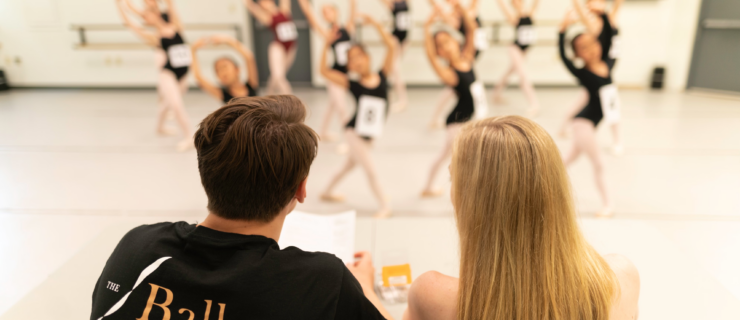How Broadway Dancers Get Through 8 Shows a Week
Performing on a Broadway stage might seem glamorous, but it comes with one of the most grueling schedules a dancer can face. Maintaining your stamina and energy, warding off injury and keeping the material fresh for eight shows a week is no joke. So how do dancers do it? Dance Spirit talked to ensemble members from some of Broadway’s danciest shows to get their survival tips.
Balancing Act
You may not have to report to the theater until late afternoon, but that doesn’t mean you should jam-pack your days with classes and workouts. “The hardest challenge for me when I started was saving enough energy to get to the 8 pm show and be able to perform at one hundred percent,” says Broadway veteran Donna Marie Asbury, who’s been dancing in Chicago for 18 years. While she does hit the gym three or four times a week, she’s careful not to overexert herself, and she makes plenty of time to rest.
Your muscles also get used to repeating the same choreography every night, so a smart cross-training regimen is essential. “You can get imbalanced doing something on the same leg eight times a week—that’s when injury starts to happen,” says Hamilton ensemble member Rickey Tripp. He incorporates yoga, Pilates, Zena Rommett Floor-Barre and active isolated flexibility (a stretching technique designed to improve range of motion) into his weekly routine to mix things up.
Set Yourself Up for Success
On the days you’re feeling tired, take advantage of downtime at the theater. Tripp swears by the 15-minute power nap, especially on two-show days. And fuel your body with food that will give you the energy you need, instead of slowing you down. “I try not to eat too huge of a meal before the show,” says Aladdin ensemble member Andrew Cao. He typically goes for a salad, with grains like brown rice or quinoa. During the show, he’ll snack on almonds for a quick energy boost, and drink plenty of water.
 Donna Marie Asbury (second from right) in the ensemble of “Chicago” (photo by Jeremy Daniel, courtesy Boneau/Bryan-Brown)
Donna Marie Asbury (second from right) in the ensemble of “Chicago” (photo by Jeremy Daniel, courtesy Boneau/Bryan-Brown)
Listen to Your Body
In between shows, take care of yourself and address any soreness you may feel. “The power of Epsom-salt baths and ice is unbelievable,” says Asbury, who also takes advantage of the physical therapy offered by the theater. Some aches and pains are a given, but don’t ignore the signs of a more serious injury. Tripp stresses that dancers shouldn’t be afraid to speak up if their pain feels like it could become a long-term issue. And if you’re recovering from an injury, be honest with yourself about what you can do. Cao, who’s been nursing a shoulder injury, is still able to perform but knows when to modify his approach. “You have to find a way to slightly adjust things to prevent further injury,” he says. For instance, without changing the choreography, he had to tweak the way he dips his partner in one number. “I had to compensate by supporting her more with my good shoulder and letting the left arm do a bit less work.”
Find Something New Every Night
Playing the same character and doing the same moves over and over again can get monotonous, but there are little ways to keep things exciting. “I give myself a challenge each show,” says Tripp, who looks for opportunities to find something new in the choreography. That could mean making eye contact with a different person than usual, looking at a different part of the set or accenting a slightly different moment in a phrase. Playing off your fellow dancers, both onstage and off, helps too. “We play silly games before the show starts, to get us laughing and having a good time,” says Cao. And there’s one thing that’s different every night, no matter what: the audience. “You’re never going to get the same reaction twice, so you always have to be on your toes,” says Asbury. “You have to stay in the moment.”
Ultimately, remember that you’re out there doing what you love—and have fun with it. “Eight shows a week is tough,” Cao says, “but it’s a pretty awesome way to make a living.”






